Top Trending Health & Beauty News & Highlights


Cough syrup deaths: TNFDA probe reveals Coldrif manufacturer's shortcomings
According to CDSCO sources, the investigation into the Kanchipuram-based Coldrif cough syrup producer, which was connected to child fatalities in Madhya Pradesh, has shown shortcomings in the Tamil Nadu Food and Drug Administration's enforcement of fundamental regulatory standards.They said that Sresan Pharma, which was granted a license by the Tamil Nadu Food and Drug Administration (TNFDA) in 2011, carried on operating undetected for more than ten years in spite of its inadequate infrastructure and many infractions of national drug safety regulations.According to the sources, a recent examination by the Central Drugs Standard Control Organization (CDSCO) revealed the unit's terrible conditions and complete disregard for Good Manufacturing Practices (GMP). "The CDSCO has not participated in any of Sresan Pharma's audits. This company was not included in any of the CDSCO databases since the CDSCO was not involved and the state FDA did not provide the CDSCO with any information on it, according to a source.Rule 84AB of the D and C Rules mandates that manufacturers update all of their certified items on the "Sugam" site, according to another source at the CDSCO.In order to facilitate improved monitoring, the regulation was notified to create a national database of all the authorized items in the nation. "The business failed to list its goods in the database. It did not follow this guideline as a result. According to the source, the state regulator is in charge of ensuring that the regulation is followed in the state.
Published 15 Oct 2025 04:59 PM
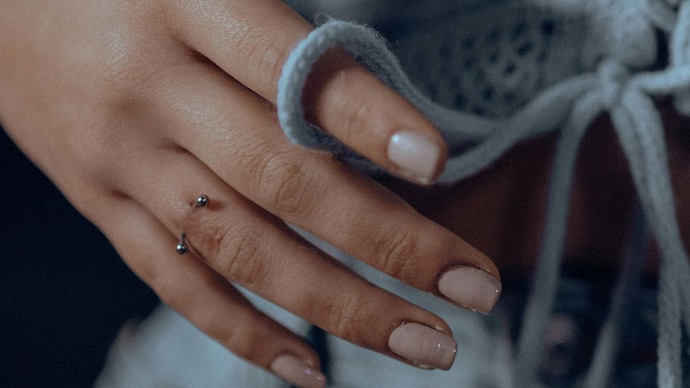

Why the most popular (and dubious) fad right now is North West's finger piercing
The Kardashian-Jenner family is known for starting trends, some of which are lighthearted, some of which are outrageous, and others of which are downright dubious. When Kim Kardashian and her 12-year-old daughter North West were spotted in Rome recently, everyone's attention was drawn to North's middle finger dermal piercing.Their excursion has generated a lot of controversy, with Kim facing backlash for permitting her preteen child receive the piercing. However, finger piercings have also gained popularity, and many people are now interested in learning more about them, their process, and their safety.A dermal piercing, also known as a micro dermal or single-point piercing, is a way to change your body where a piece of jewelry is inserted under the skin so that only the pretty top is visible, says Sahil Bali, an artist at Devil'z Tattooz in Delhi. Bali continues by explaining that dermal piercings are single-entry piercings, as opposed to conventional piercings, which enter one side of the skin and exit the other. "They are performed by using a needle or dermal punch to make a tiny pocket in the skin, after which an anchor base is inserted beneath the skin. After that, a decorative stud or gem is put onto the anchor," he explains, adding that these piercings may be done practically anywhere on the body, including the fingers, lower back, cheekbone, and chest, but they take longer to heal than conventional piercings."Dermal piercings need careful cleaning and protection, as they can get easily irritated or caught on things, making them slightly higher maintenance than normal piercings," says Dr. Shireen Furtado, senior consultant, medical and cosmetic dermatology, Aster CMI Hospital, Bengaluru.
Published 07 Oct 2025 09:43 PM


Can your hair texture change after postpartum?
Becoming a parent is among the most surreal experiences one can have. It seems as though your heart is bursting with love, but simultaneously, your body can feel more delicate and fatigued than it ever has after the ordeal of giving birth, even though you are amazed by the miracle it has just performed. With hormones fluctuating wildly and energy levels oscillating, you may discover that you are adapting to a new version of yourself on physical, mental, and emotional levels.In the midst of all these changes, your hair starts to narrate its own tale as well. Due to hormonal changes, many women notice significant hair loss in the months following childbirth. However, it often surprises people to learn that not only does the amount of hair change, but sometimes the texture does as well.Your hair may grow straighter if you have curls, or develop waves if it’s straight, and the texture of your locks can change in surprising ways, serving as a reminder that motherhood transforms more than just your routine—it transforms you.Many individuals observe that their hair becomes thicker, shinier, and fuller during pregnancy, resembling a natural glow-up. Dr. Ruben Bhasin Passi, a dermatology consultant at CK Birla Hospital in Gurugram, explains to India Today that this occurs because elevated estrogen levels prolong the hair growth phase, which stops normal shedding.This provides that additional volume and vitality. However, after the baby comes and hormone levels decrease, the narrative shifts. “When there’s a sudden decrease in hormone levels, the body adapts and hair experiences significant changes, which often surprises new mothers,” she adds. The doctor further explains that hair naturally cycles through phases of growth (anagen), rest (catagen), and shedding (telogen). During pregnancy, increased levels of estrogen keep more hair in the growth phase. After childbirth, when estrogen levels decrease, a number of these hairs enter the shedding phase simultaneously.
Published 06 Oct 2025 05:41 PM


The Reason for the Split The ultimate 'I'm done' move is Bob.
My heart was broken by him. So I cut my hair. Even though the numbers don't stack up, it feels like a fair exchange to women. According to the well-known quote by Coco Chanel, "A woman who cuts her hair is about to change her life." A fresh appearance turns into your armor; you feel prepared to confront, if not combat, the outside world and put an end to those existentially troubling ideas.After a few uncomfortable months in Paris, away from her family, her first (and only) love, Conrad, and her brother Jeremiah, with whom she almost got married, Belly did the same. In case you missed it (and have been living in a no-Internet zone these past several weeks), that was a reference to The Summer I Turned Pretty.By the way, in the first episode of Season 3, Belly’s then-fiance told her, ‘Hey, don’t ever cut your hair, okay?’ Yet here she was, sporting a French bob - ready to leave behind the wedding mess and finally embrace the new city, and her new self. Adding to the confident new look was a bold red lipstick - another first she chose to debut. “I think women often cut their hair after a breakup or when they want to let go of old baggage and signal to people that they’re ready for change,” Jenny Han, the show’s executive producer and author of the novels that the series is based on, told Vogue."The idea is that you can feel different if you look different," she continued. A hair makeover—more specifically, a haircut—has long been used as a coping strategy. But Belly is going straight for a bob instead of the traditional breakup bangs? That's a powerful move, and it serves as a reminder to the next generation of the strength of a breakup bob.In 2018, following her split from Justin Bieber, Selena Gomez got a bob. After her breakup with Joe Jonas, Gigi Hadid also stunned the red carpet with a bob, but it turned out to be a phony one (the bob, not the breakup). Additionally, we see Claire in the web comedy Fleabag go for the perfect combination: a haircut with bangs. It shouts, "I'm ready, come what may!" when done correctly, but Claire's, well, went terribly wrong.
Published 03 Oct 2025 09:43 PM


Health & Beauty
HEALTH & BEAUTY


Increased heart attacks: An explanation of lifestyle, genetics, and novel risk factors
An poor diet, inactivity, and smoking are among the lifestyle choices that lead to high blood pressure, high cholesterol, and an increased risk of heart attacks. A family history of heart disease, particularly early-onset heart disease, suggests a propensity, thus genetic factors also come into play. Furthermore, chronic diseases like chronic kidney disease, some chronic inflammatory diseases, and even mental health conditions like anxiety and depression are examples of novel risk factors. These conditions can interact with lifestyle and genetic factors to raise risk, especially during stressful times.Aspects of Lifestyle Unhealthy Diet: Diets heavy in sodium, cholesterol, trans fats, and saturated fats can cause atherosclerosis, or plaque accumulation in the arteries, high blood pressure, and elevated cholesterol levels.Physical Inactivity: Living a sedentary lifestyle raises the risk of heart disease as well as other risk factors like diabetes, high blood pressure, high cholesterol, and obesity.Smoking: Smoking raises the risk of heart attack and stroke, making it a major risk factor.Alcohol Abuse: Drinking too much alcohol increases the risk of heart disease by raising blood pressure and lipid levels.Obesity: Being overweight or obese raises the risk of heart disease and is associated with risk factors like diabetes and high blood pressure.Factors related to genetics Family History: A higher genetic predisposition to heart attacks may be indicated by a significant family history of early heart disease or specific genetic disorders, such as familial hypercholesterolemia.


WHO calls for measures to give pregnant and nursing women priority in TB research and vaccination trials.
In order to promote the early and ideal engagement of pregnant women in TB research, the World Health Organization Global Programme on Tuberculosis & Lung Health (WHO/GTB) spearheaded a consensus-building effort in 2024. The procedure is in line with more general global trends to change clinical trial procedures, such as attending to the needs of marginalized groups. Five thematic working groups (addressing preclinical TB research, TB therapeutics research, TB vaccine research, maternal TB surveillance systems, and advocacy), evidence reviews to fill in knowledge and data gaps, and a consensus meeting in February 2025 comprised the consensus process, which is summed up in this consensus statement. Cross-cutting initiatives and working group theme-specific strategies are among the methods for earlier and better inclusion that emerged from the consensus process. Geneva — The World Health Organization (WHO) has called on the international health community to stop routinely excluding pregnant and breastfeeding women from tuberculosis (TB) research in a strong Call to Action and Consensus Statement. This historic initiative, which was created through a worldwide consensus process, provides a thorough structure to guarantee that everyone, including those who are most at risk, has fair access to TB advances. Although an estimated 200,000 pregnant or postpartum women contract tuberculosis (TB) annually, they are mainly ignored in clinical trials and research. Because of this exclusion, there are significant gaps in the research, which delays these groups' access to immunizations and life-saving treatments."All individuals with TB, including pregnant and lactating women, must benefit from TB research," stated Dr. Tereza Kasaeva, Director of the WHO Department for HIV, TB Hepatitis, and Sexually Transmitted Infections. "It's time to give their inclusion top priority—not as a last-minute addition, but as a necessary first step toward evidence-based, equitable care."


Fermented and Probiotic Skincare: The Trend Everyone’s Talking About
Skincare trends come and go, but fermented and probiotic products are proving they’re more than just hype. From cleansers to creams, more people are reaching for formulas packed with good bacteria and fermented ingredients—and for good reason. These products aim to support your skin’s natural balance instead of fighting against it. At the heart of this trend is the skin’s microbiome, the layer of bacteria that protects and maintains healthy skin. Probiotic skincare introduces beneficial microbes, while fermentation breaks down ingredients into smaller, more potent compounds. The result? Products that are often gentler, more effective, and surprisingly soothing—especially for sensitive or breakout-prone skin. Fermented skincare isn’t exactly new—K-beauty brands have used these methods for years—but it's now catching on globally. Consumers are becoming more ingredient-aware and looking for skincare that works with the body, not against it. Whether it’s a kombucha-infused toner or a probiotic-rich serum, these products promise nourishment without the harsh side effects. One of the biggest draws is the long-term benefit. Instead of offering a quick fix, probiotic and fermented formulas help build stronger, more resilient skin over time. And with growing interest in gut health and natural wellness, it’s no surprise that people are now thinking about skin health in the same way. So, is it worth the switch? If you’re after calmer, healthier skin with a focus on balance over harsh treatment, fermented and probiotic skincare might just be your next go-to.


Is the 'Caveman Skincare Routine' a hoax in terms of hygiene?
I'm a regular TikTok scroller (the four hours of screen time a day speaks for itself), and I've seen a ton of beauty films, from popular trends to amazing hacks that would put a Victorian kid in a coma. The caveman skincare method, however, may just take the biscuit—or perhaps I should say water—as the most talked-about topic on SkinTok lately.The 'Caveman Skincare Method' is the skincare regimen that TikTok creator Tia Zakher has lately described in a number of videos on the platform. "After 8 years of picking and over-exfoliating, I'm healing my skin barrier by doing the one thing I never tried before... absolutely nothing," Tia explains in a video that has received 9.7 million views. In other words, she has stopped using water in addition to all skincare products (I'm referring about moisturizer, exfoliant, and cleanser). Tia responded to Cosmopolitan UK's inquiry on why she chose to utilize the caveman skincare method by saying, "I decided to do it because I wanted to try a different approach and I do think it's working for me."


Doctors express an urgent warning that reels are now causing eye issues after "brain rot."
All age groups, but mainly children and young adults, are experiencing an increase in eye diseases as a result of excessive screen use, especially binge-watching reels on social media sites.Following worries about the effect of short-form films on mental health, medical professionals are now sounding the alarm about a brand-new, rapidly developing issue: "reel-induced eye damage."Across all age groups, excessive screen time—especially binge-watching reels on social media sites like Facebook, YouTube, Instagram, and TikTok—is contributing to an increase in eye diseases, particularly in children and young adults. Leading ophthalmologists discussed this at the Asia Pacific Academy of Ophthalmology and All India Ophthalmological Society's ongoing Joint Meeting, which took place Tuesday at the Yashobhoomi-India International Convention and Expo Centre.Dr. Lalit Verma, president of the Asia Pacific Academy of Ophthalmology (APAO) 2025 Congress, spoke sternly about the "silent epidemic of digital eye strain" brought on by prolonged screen time. "We are seeing a sharp increase in cases of dry eye syndrome, myopia progression, eye strain, and even early-onset squinting, especially in children who spend hours watching reels," he stated. "We recently had a student who came in complaining of blurred vision and ongoing eye irritation. Upon inspection, we discovered that his eyes were not shedding enough tears as a result of spending too much time at home viewing reels on a screen. He was given eye drops right away, and the doctor told him to observe the 20-20-20 rule, which calls for looking at anything 20 feet away for 20 seconds every 20 minutes.The president of the All India Ophthalmological Society and chairman of the organizing committee, Dr. Harbansh Lal, described the gravity of the situation.
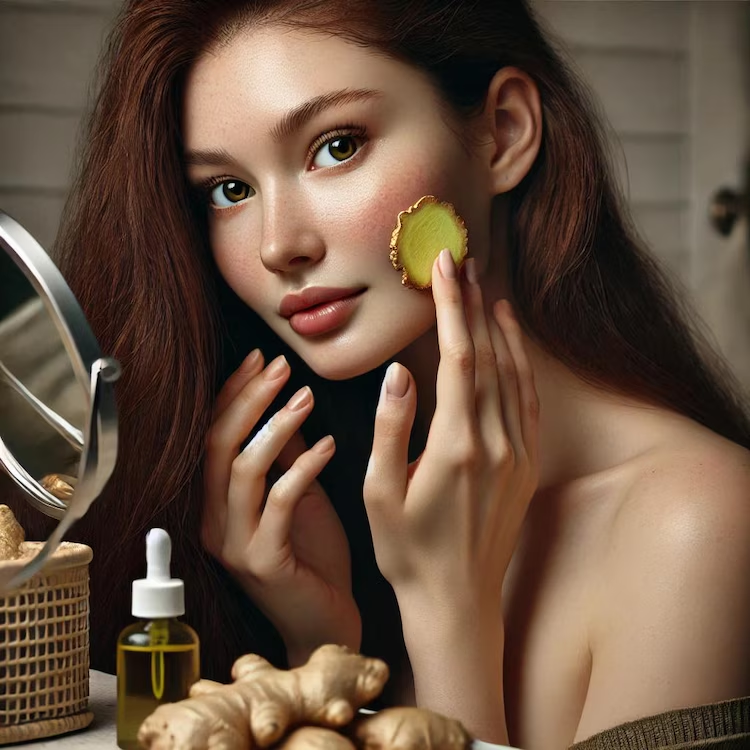

According to Instagram, rubbing raw ginger can help clear up acne. Are dermatologists in agreement?
Another day, another Instagram beauty tip that has gone viral. You surely have a feed full of skincare tips on how to treat acne if you have it, like I do. Social media is using natural components from your kitchen, such as flax seeds for "botox" and raw garlic. This time, raw ginger is the focus, as influencers assert that applying it topically can help eradicate acne. It seems like a simple solution to acne, doesn't it?Innumerable videos of Indian skinfluencers with radiant skin can be found online these days, stating that the key isn't pricey facials but rather applying raw ginger directly to acne outbreaks to treat them right away. But is this spicy suggestion really supported by any science?To find out if this pattern is reliable, let's take a closer look and get some professional guidance.What are the opinions of experts? First, let's get this out of the way. Anything is not necessarily beneficial to your skin just because it is natural. particularly when used undiluted and raw. Senior consultant dermatologist Dr. Gulhima Arora of Mehektagul Dermaclinic states that ginger has only been indirectly shown to be effective in treating acne in scientific studies. It shouldn't be regarded as the primary or first line of treatment. She emphasizes that acne is a complex condition and that not all of its triggers can be addressed by a single spice.Dermatologist and Kaya Limited medical advisor Dr. Saranya B concurs, saying that using raw ginger to the face is not a clinically validated method of treating acne. Despite its antibacterial and anti-inflammatory qualities, direct application may irritate skin. According to Skin Smart Solutions' founder and principal dermatologist, Dr. Bindu Sthalekar, "there is no scientific proof that applying raw ginger topically treats acne." Theoretically, it might be beneficial, but only if taken in conjunction with other drugs and with good tolerance.


Doctors express an urgent warning that reels are now causing eye issues after "brain rot."
All age groups, but mainly children and young adults, are experiencing an increase in eye diseases as a result of excessive screen use, especially binge-watching reels on social media sites.Following worries about the effect of short-form films on mental health, medical professionals are now sounding the alarm about a brand-new, rapidly developing issue: "reel-induced eye damage."Across all age groups, excessive screen time—especially binge-watching reels on social media sites like Facebook, YouTube, Instagram, and TikTok—is contributing to an increase in eye diseases, particularly in children and young adults. Leading ophthalmologists discussed this at the Asia Pacific Academy of Ophthalmology and All India Ophthalmological Society's ongoing Joint Meeting, which took place Tuesday at the Yashobhoomi-India International Convention and Expo Centre.Dr. Lalit Verma, president of the Asia Pacific Academy of Ophthalmology (APAO) 2025 Congress, spoke sternly about the "silent epidemic of digital eye strain" brought on by prolonged screen time. "We are seeing a sharp increase in cases of dry eye syndrome, myopia progression, eye strain, and even early-onset squinting, especially in children who spend hours watching reels," he stated. "We recently had a student who came in complaining of blurred vision and ongoing eye irritation. Upon inspection, we discovered that his eyes were not shedding enough tears as a result of spending too much time at home viewing reels on a screen. He was given eye drops right away, and the doctor told him to observe the 20-20-20 rule, which calls for looking at anything 20 feet away for 20 seconds every 20 minutes.The president of the All India Ophthalmological Society and chairman of the organizing committee, Dr. Harbansh Lal, described the gravity of the situation.


According to Instagram, rubbing raw ginger can help clear up acne. Are dermatologists in agreement?
Another day, another Instagram beauty tip that has gone viral. You surely have a feed full of skincare tips on how to treat acne if you have it, like I do.Social media is using natural components from your kitchen, such as flax seeds for "botox" and raw garlic. This time, raw ginger is the focus, as influencers assert that applying it topically can help eradicate acne. It seems like a simple solution to acne, doesn't it?Innumerable videos of Indian skinfluencers with radiant skin can be found online these days, stating that the key isn't pricey facials but rather applying raw ginger directly to acne outbreaks to treat them right away. But is this spicy suggestion really supported by any science?


France: In 2024, pharmacy sales will fuel a weak beauty sector.
France's growth is modest in a worldwide beauty market that increased by 7.3% in 2024. The value of the nation's beauty and personal care product sales increased by 3% over 2023 across all distribution channels, but volume sales decreased by 2%. These aggregate numbers, however, conceal notable differences that reveal a profound shift in the market.France continues to lead the world cosmetics market in terms of exports, but its home market isn't exactly doing well! The global beauty market expanded by 7.3% in 2024 over the previous year, and by 7.7% in Western Europe, according to NielsenIQ. On the other hand, Circana data showed that sales in France decreased 2% in volume and increased 3% in value to EUR 9 billion.Large supermarket retail chains are having trouble with their sales, as both volume and value have decreased by 4%. In the meantime, despite a minor decline in volume (-1%), selective distribution sustains value growth (+4%). Despite this, pharmacies are still doing very well; their value and volume have increased by 10% and 7%, respectively, making them the most active channel in the French market.
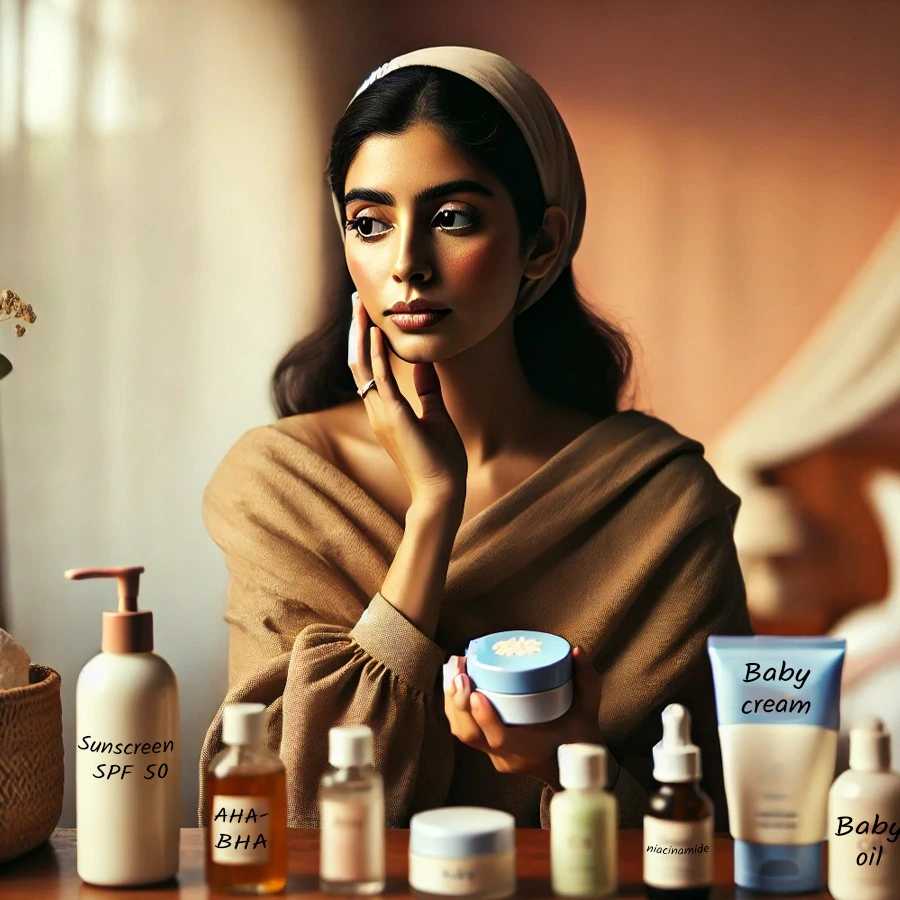

Still moisturizing with baby cream? Stop now.
To keep their skin as smooth, soft, and perfect as a newborn's, many individuals still use baby products. However, did you ever ask your dermatologist if this was helping your skin?Is it overstating things to argue that we live in a paradox? A new skincare product is introduced and put on the shelves of your local Sephora every day, and customers are going crazy with the sheer volume of options. Dermatologists detest this habit, which is so widespread that most people wind up storing products they don't even need.On the other hand, there is a group of people who enjoy living in nostalgia. For them, time seems to have stopped, but only in terms of their skincare regimen; they haven't strayed from baby products for smooth, silky, and immaculate skin. You must also stop!What is beneficial for a baby's sensitive skin might not be beneficial for your mature skin. It could be time for an upgrade if you've been using baby creams as your go-to moisturizer. Baby creams are made for infant skin, which is thinner, more hydrated, and produces less oil, according to Dr. Ruby Sachdev, a consultant aesthetician at Gleneagles Hospital Bengaluru. Their requirements differ from those of adult skin. However, adult skin has sebum and sebaceous glands, is thicker, generates oil, and is subjected to harsher conditions including UV radiation, pollution, and stress. Therefore, a baby moisturizer might not be enough to adequately hydrate and protect adult skin.Celebrity dermatologist Dr. Niketa Sonavane, who founded Mumbai's Ambrosia Aesthetics, concurs. She notes that mature skin needs elements that truly hydrate, protect, and restore because it loses moisture more quickly. Baby creams, on the other hand, are too simple for this. Even while they might feel smooth and calming when applied, they lack the active components that mature skin needs, such as hyaluronic acid, ceramides, and peptides (which preserve the skin barrier).


Is it true that the popular "Moroccan Nila powder" may make your skin more radiant?
Influencers are slathering themselves in vivid blue hues to attain lighter skin, and Nila Powder is sweeping the internet.Some goods in the beauty industry occasionally get viral. Influencers returning to natural solutions for skincare issues is one significant trend we've observed. It appears that the newest member of this wave, Nila Powder, is from Morocco. Influencers are dressing in eye-catching blue hues as Nila Powder takes the internet by storm. This product's claims are straightforward: it brightens the skin, reduces hyperpigmentation, and has anti-inflammatory properties. Sounds like a three-in-one-potential, doesn't it? It's not surprising that this product is making its way into the hands of almost every beauty enthusiast, as many Indians suffer from hyperpigmentation and our fixation with skin-brightening hasn't quite subsided.


When is A-beauty going to surpass K-beauty? Vivek Sahni, CEO of Kama Ayurveda, offers his thoughts
While A-beauty emphasizes natural cures, Ayurvedic traditions, and general well-being, K-beauty is all about high-tech, multi-step skincare for an outward glow.Will the global trend for K-beauty be surpassed by A-beauty, the popular term for ayurvedic beauty? On Day 1 of the India Today Conclave 2025, Vivek Sahni, the founder and chairman of the upscale ayurvedic cosmetics brand Kama Ayurveda, shared his thoughts on the subject. According to him, A-beauty, or Ayurvedic beauty, need to be given an opportunity to develop and make a name for itself in the beauty sector. Despite still having a long way to go, Ayurveda is slowly making its way into the luxury market, the creator revealed while speaking at the Conclave in New Delhi.


Pope Francis is stable and still receiving medical attention.
Vatican City (ANI): According to Vatican News, which cited the Holy See Press Office's release on Saturday, Pope Francis remains in stable condition and is still receiving medical attention. He is responding well to treatment, rotating between high-flow oxygen therapy and non-invasive mechanical ventilation.The Pope's vital indicators are stable, his white blood cell count is normal, and he has no temperature, according to the statement. He is actively engaging in respiratory physical therapy and eating by himself. No new bronchospasm events have occurred."The Holy Father exhibits no leukocytosis, or elevated white blood cell count, nor does he have a fever. He has consistently maintained stable hemodynamic values, continued eating independently, and participated actively in respiratory physical therapy. According to the statement, he has not had any more bronchospasm episodes.Additionally, the testimony attested to Pope Francis's alertness and focus. He spent time in prayer and received the Eucharist on Saturday afternoon.
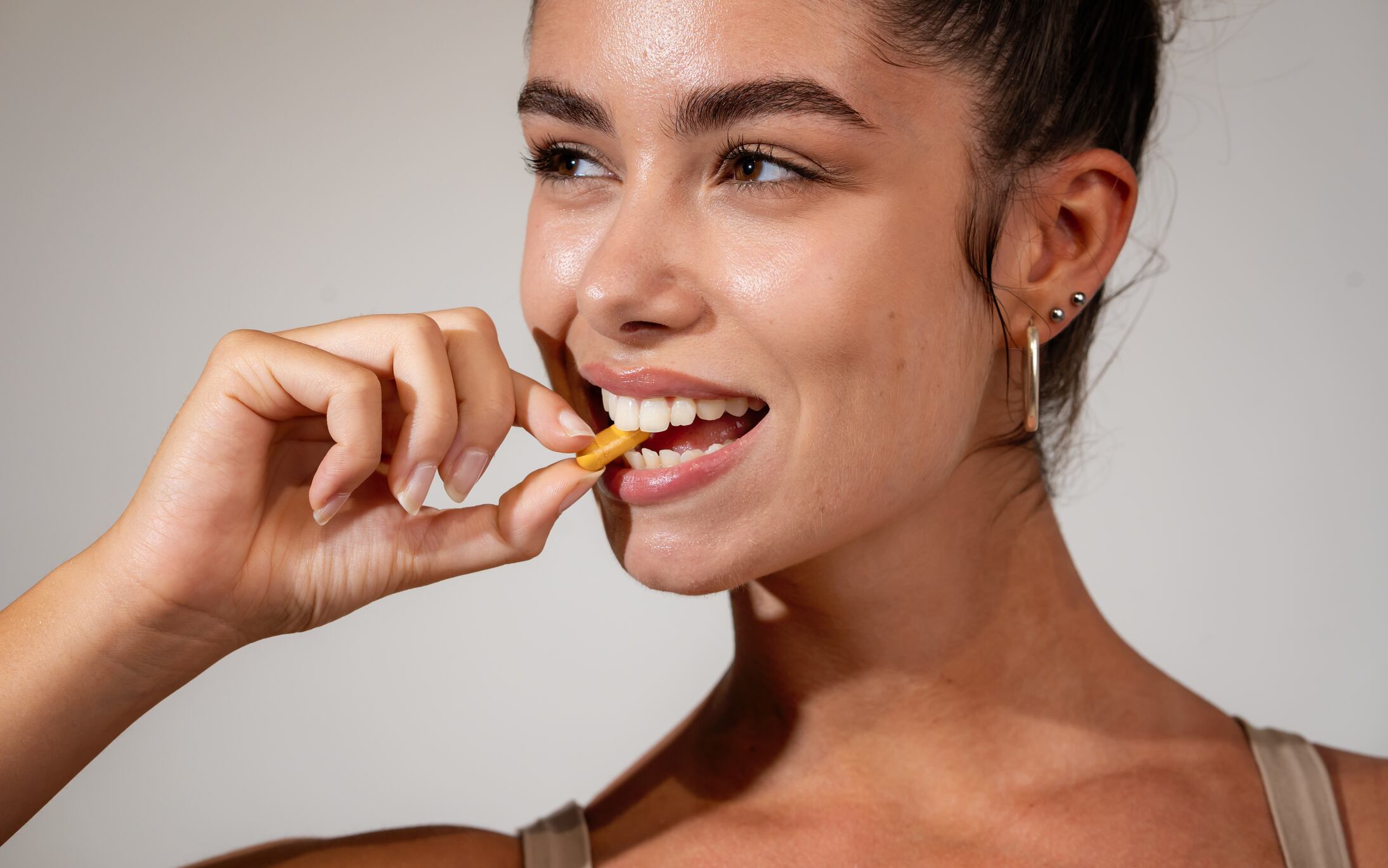

The beauty sector sets the standard higher: 2025's top trends
The beauty and wellness sectors are going through a significant transition as we move into 2025, propelled by technological advancements, a growing awareness of holistic health, and a growing need for individualized experiences. The trends influencing the future of beauty are as much about inner vitality as they are about external looks, as there is an increasing emphasis on wellbeing that goes beyond superficial aesthetics.In the upcoming years, a few major trends are likely to dominate the luxury beauty and wellness industries in this quickly changing environment. With the advent of preventative wellness practices and advanced skincare technologies, the industry is shifting toward a more integrated strategy where innovation, research, and self-care come together. Here are a few of the most intriguing trends in beauty and aesthetics that are anticipated to emerge in the upcoming year. Stem cell therapy is becoming a game-changer in the battle against aging as the beauty industry adopts more scientific and regenerative advancements. Stem cells mend and renew skin from the inside out by utilizing the body's innate regenerative qualities, in contrast to conventional skincare procedures that frequently concentrate on surface-level enhancements.


The 5-minute skincare glow trick that works for all skin types is face steaming. Here's how to do it correctly.
Facial steaming, which only takes five minutes a week and helps to cleanse, revitalize, and improve the appearance of our skin, can have a significant positive impact on the state of our skin. The primary benefit of face steaming is its capacity to open pores and make it easier for impurities, oil, and grime to be released. Fill a pan or kettle with around five cups of water and bring it to a boil. It should be moved to a bowl. Essential oils like lavender or tea tree oil can also be added. Step 3: After letting the water sit for a few minutes, put your face far enough away from the bowl to allow for the steam to reach it.December 9, 2024


DIY skincare is becoming popular again among Asian influencers, but there's a catch.
DIY hair and skincare trends may seem like the best beauty hack because they're simple, inexpensive, and natural. Is the buzz, however, justified?"Run to your kitchen!" "All you need are these kitchen staples" "Whip up these DIY face masks with simple ingredients from your kitchen" If you're interested in skincare and beauty, your feed (like mine) is undoubtedly overflowing with do-it-yourself videos of beauty influencers boasting about their flawless, glass skin with almost undetectable pores and how one "face mask" transformed their lives. No, that isn't overstating things. It seems that life-altering experiences and radiant skin go hand in hand. Two commonalities in these films are that the influencers are primarily from the West and that their "miracle remedy" has been a "grandmother's secret" for millennia. These influencers claim that rice, honey, chickpea flour, and turmeric are (some of) the keys to radiant skin. Additionally, the magic components include turmeric, ginger, garlic, and more for improved intestinal health, which naturally results in glowing skin. By sharing their "holy grail" skincare tips, these influencers generate interest. Everyone starts talking about the videos when they go popular. And because most kitchens already have these miraculous ingredients, people begin using them to make cocktails or slathering them on their faces without doing any research. Notably, these influencers frequently hold brands of their own, plan to create a brand, or are associated with one of the brands. Let's examine a few instances."Okra for skin that glows" With just 48 posts, influencer Zafeera, also known as @byzareefa, has amassed over 4 lakh followers. She is most renowned for posting recipes for face masks and drinks that promise healthy digestion and bright skin, some of which use her brand.


Is retinol still the best option for anti-aging skincare, or is the buzz around it overshadowed by ravinage?
Retinoids have long been heralded as the best skincare ingredient for skin rejuvenation and anti-aging. Decades of studies have demonstrated the effectiveness of retinol, a well-known over-the-counter version of vitamin A.Ravange, a more recent competitor, has just joined the market and promises comparable advantages. Dr. Shweta Mishra, a renowned facial cosmetic and aesthetic surgeon at Sharva Clinic in Pitampura and Rohini, New Delhi, provided insight into this ongoing discussion in an interview with HT Lifestyle.The basis of retinol science The ability of retinol to promote collagen synthesis, speed up cell turnover, and lessen hyperpigmentation has been the subject of much research. Dermatologists throughout the world love it for its reliable effects on wrinkles, fine lines, and skin texture. According to Dr. Shweta Mishra, "retinol is one of the most thoroughly studied skincare ingredients available today." Its effectiveness has been demonstrated in several clinical trials, and its mode of action is well known. For my patients who want noticeable and long-lasting results, this makes it a dependable choice.Ravinage: The recent arrival to the neighborhood In contrast, Ravinage is a relatively recent product in the skincare market. Although its research is still in its early stages, it is said to provide comparable advantages to retinol, including skin renewal and anti-aging properties. Uncertainty surrounds the long-term effects, safety profile, and overall efficacy in comparison to retinol.According to Dr. Mishra, "Ravine simply does not have the extensive research backing that retinol does, but I always keep an open mind to new developments in aesthetic medicine." "I cannot advise a product to my patients as a medical expert unless I am absolutely certain of its efficacy and safety. I can't recommend Ravinage over retinol at this time because it doesn't have the scientific backing I need.
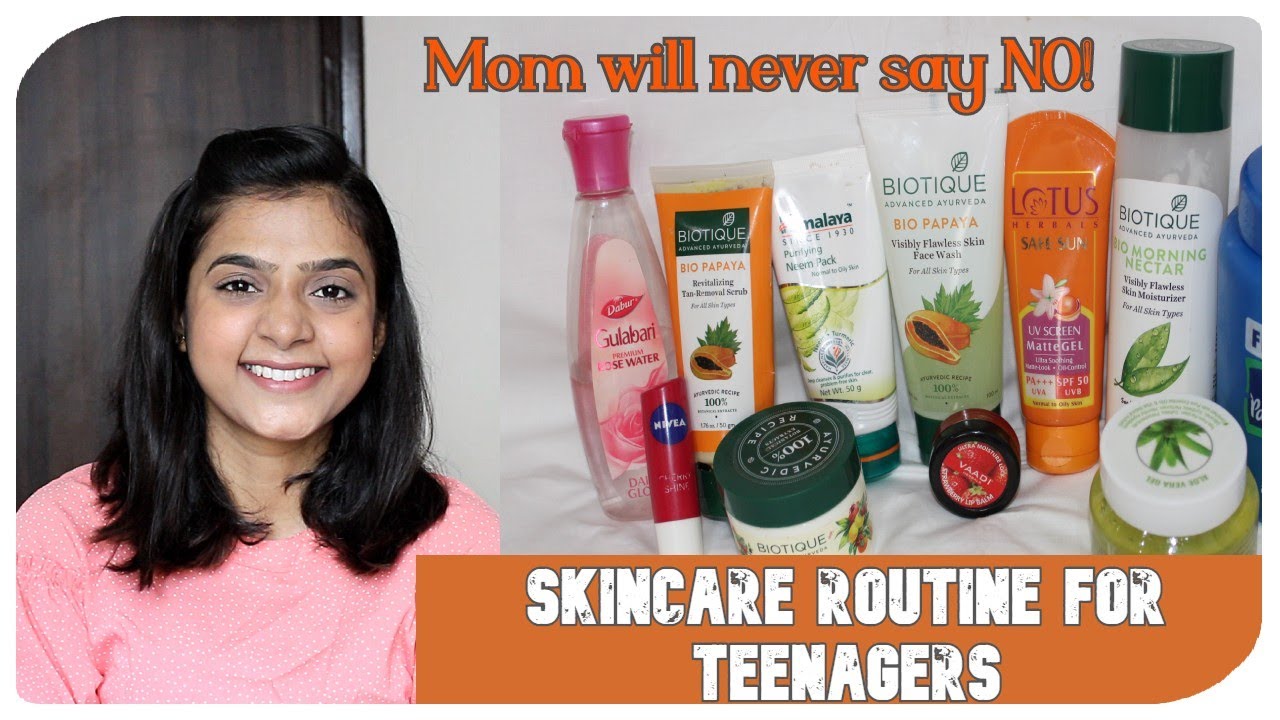

What kind of skincare regimen is appropriate for an Indian teen?
Teens shouldn't indulge in either of these extremes: ignoring skincare completely or oversaturating their skin with every popular skincare product.If you grew up in the 1990s, you may recall how your skincare preferences were heavily influenced by television advertisements. Products like fairness creams, "game-changing" peel-off masks, and "miraculous" face cleansers that cleared acne became popular at that time. Did your teenage skin suffer more negative effects from those products than positive ones? A lot of dermatologists would concur. In the present, a parallel tale is developing, albeit with a twist. Social media influencers have supplanted television advertisements by promoting new products virtually every day.For example, 14-year-old Delhi student Kabeer Kanojia discovered salicylic acid on Instagram instead of in a chemistry lesson. He is eager to purchase salicylic acid and a popular charcoal mask to treat his acne, but he is now unable to do so due to a lack of funds.



















